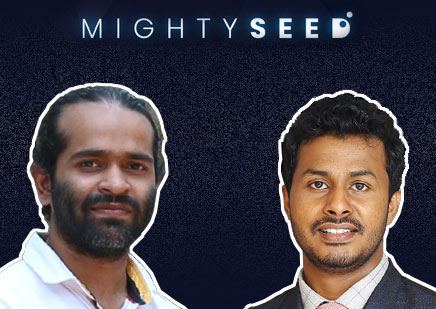South Indian product design firm Mightyseed Designs came into limelight when the company came up with modern design features to Vespa 98 electric concept. It is a reincarnation of the original Vespa design, produced by Enrico Piaggio. Kochi-headquartered Mightyseed Designs also took a project to reincarnate the Hindustan Motors’ legendary Contessa in a pure electric form. The Contessa was manufactured by Hindustan Motors (HM) from 1984 to 2002, and holds a great place in most of our hearts. In an interaction with the NFAPost N V Vijayakumar, Mightyseed Designs founders Bonny Sunny and Adithyan G share their thoughts on collaboration to solve the design problem.
Design is a creative area which encompasses various elements. Can you elaborate on the idea behind starting the firm?
Mightyseed Designs is an industrial design and development company with a proven track record of delivering unique products that drive success. We believe India is a place with huge potential for new product development. Challenges faced by an Indian every day is unique than that of challenges in other global cities which means the research insights from diverse Indian population will be a good kick-off for any product development.
What were the bottlenecks you faced during your scaling up days? How did you succeed in getting your client acquisition strategy?
Before commenting on bottlenecks, what is easy for our business, in the beginning, was to find great talents. India is a place with a lot of talents. The main bottleneck we had to face was less accessibility to funds, especially when it comes to government funds. Being a service provider company, we wanted money to serve our customers better during the initial phase of business. We have to build everything from scratch with virtually no external support. It was really a testing time for us. The products delivered adhere to global standards and are of excellent quality, attaining bespoke customer satisfaction.
How do you foresee the growth or scope of your firm?
We see a welcoming future and more responsibility on our shoulders in coming days. This is primarily due to the current business circumstances that we are calling the ‘new normal’ due to Covid-19 pandemic. Now, there is a necessity for many products around us to be reimagined for this new normal and the various steps the government is taking to make India a self-reliant country where our services are going to be essential.
Design is an important component of any business activity. What is the USP Mightyseed offers to clients so that you are ahead of the competition?
We believe problems are best solved collaboratively and each problem is the door to new opportunities. Integrity is one important value we never let to fail also. We at Mightyseed consider the customer as a family and believe in growing together. Our shared values and beliefs influence the work that we do, and the impact we hope to achieve in clients’ brand.
Can you elaborate on the tools and platform that you are availing for product design? What is your strategy to achieve creative maturity in product design?
At Mightyseed, we have our design process called 6-FIG that not only addresses the quality of the final product but also provides a platform for the team to work together efficiently and the ease of collaboration for the clients. 6-FIG, which is the most comprehensive design system, also provides state-of-the-art solutions to practical problems faced by our clients in implementing the solution.
Do you find any difference in working with Indian and international clients?
Not much as design is a universal language. But there is a difference in the understanding of design itself. We find that the international clients have a better understanding of what goes into design process.
What is your take on co-creation, working with a big team around the globe in product design?
Co-creation brings a lot of new ideas to the project, which is the key for a successful innovative project, this is where the cultural exchange takes place and it’s a huge opportunity to explore many directions.
How do you look at the competitors in the market?
We look at our competitors as good designers and we look for opportunities to learn from them as well.
When are you scouting for funding for steady growth?
We are happy with the way the organisation is growing. We are also looking for funding with partners who are ready to work for the common good. But currently we are more focussed on adding more clients and serve them in a better way.
How do you view the prevailing regulatory environment and how it helps you take your venture forward? As entrepreneurs, what are you expecting from the government?
We feel there is scope for improvements. We need a better platform where service providers like us and hardware startups can easily connect and collaborate, looking at industries in isolation may not be beneficial. When they see a particular industry, they should consider the complete ecosystem supporting the industry. We, being a design service and a part of the ecosystem for many industries, we wish to be on a platform that is easy to engage.





